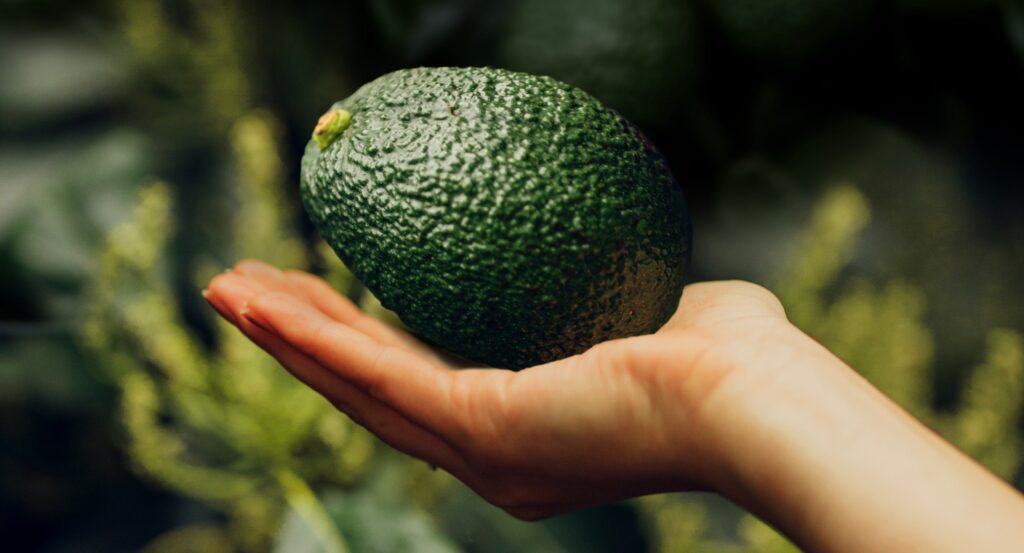World avocado market
The world avocado market has seen exponential growth over the past ten years, with Mexico still holding dominance as the world leading avocado exporter. Exporting nations who previously held just a small amount of market share, have gained traction with the profitability of the avocado industry. Countries such as Columbia, Morocco and Tanzania are all now realising the potential of the avocado. Over this ten-year period, the avocado world market has increased its size to almost four times larger. At the end of the 2009 avocado season, approximately 693,000 tonnes of avocados were exported around the world. Now in 2019, the number of avocados exported this year is 2,140,000 tonnes. The majority of this increase can be accounted to the increasing demand for avocados around the world and worldwide understanding of the benefits the avocado provides. Some of this increase is due to logistical transport technological advances and world trade deals such as the New Zealand and South Korea free trade agreement, which is reducing tariffs to zero by 2024 and ANZTEC, another New Zealand trade agreement with Taiwan, Penghu, Kinmen and Matsu.
Exporters
Mexico
Mexico still stands as the world leader in regards to export tonnes. The 2018-19 season saw approximately 1,900,000 tonnes of avocados grown domestically with 1,198,000 tonnes of these avocados exported out of Mexico. Mexico’s large volume of avocados is due to its pedoclimatic conditions; which allows for almost all year round production, its development of the industry as well as land size available for crop use. Due to the profitable nature of the industry, the cartels have been showing interest in the avocado market. Rather than using land for planting marijuana or other illegal crops often favoured by the Mexican cartels (Linthicum, 2019), avocado trees are now being planted in replacement of these trees; as they are more profitable. The majority of Mexican avocados are exported to USA, exporting nearly 80% of all its avocados to the US alone. Mexico’s other export markets include Japan, Canada and Europe. However, these markets are not nearly as large as USA (Fruitrop Magazine, 2019).
Peru
Peru stands as the number two global Hass avocado exporter; making great strides to catch up to Mexico’s exporting volume. In 2018 Peru exported 359,989 tonnes of avocados to its major market in Europe. Over two thirds of Peruvian exported avocados go to the European Union market. However, an ever-growing market for Peru is the Asian market. Peru started avocado trades with Asia in 2013 and has seen an increase in demand each year. Avocado growing projections for Peru estimate that in 2023 production of avocados will be over 630,000 tonnes with over 550,000 tonnes exported to their major markets of Asia and Europe (Fruitrop Magazine, 2019).
Colombia
Columbia is the newest avocado exporter with plans to become the ‘plan B’ for the USA market; backing up Mexico’s export tonnes. In 2018, Colombia is the ninth largest avocado exporter in the world but is on the edge of immense levels of growth in the next decade with large young orchards entering production or nearing maturity. One investor – “Westfalia Fruit”, has plans to plant over 100,000 new trees in the next few months. Colombia’s plan B goals stem from realising that reaching Mexico’s export volume is an almost impossible task. Colombia prides itself on having more stable commercial conditions than Mexico; not having cartels involved in their operations. Colombia also promotes that its transit times are faster than Mexico and can deliver one day earlier than Mexico when exporting to the east coast of USA. Colombia also has the ability to reliably produce all year-round and compliment the USA’s Mexican avocado imports (Fresh Fruit Portal: Westfalia eyes Colombian avocado growth over coming years, 2019).
Chile
Chile has seen stable production over the past five years. Producing around 200,000 tonnes of avocados each year during this period. Chile is the third largest exporter of avocados, mainly exporting to the European Union; almost 90,000 tonnes of its total exported 150,000 tonnes are to the European market. However, with recent droughts in the country, avocado growing has raised an issue with the water supply. Avocados require a lot of water, 64 more times water than for an equivalent yield of tomatoes, and for dry countries such as Chile that are only getting dryer due to climate change, avocado production is intensive on the water supply. This has led to reports in the media suggesting many local communities’ natural sources of water depleting. This has resulted in the government implementing a water allowance of 50 litres a day. It is clear that taking steps to help mitigate the issues of climate change is necessary if Chile wants to remain as the third largest exporter of avocados (Olivieri, 2019).
Africa
The African countries have been making major strides with their export levels of avocados. South Africa, Kenya and Tanzania are the three countries that have notable export levels. South Africa has been a key contributor to the world supply of avocados over the past ten years. With average export levels around 40,000 tonnes of avocados during that period. However, in the 2018-19 season exports have peaked to 90,000 tonnes, this new level of export put South Africa in fourth in export volume for the 2018-19 season. Kenya is also another African country to take a large leap over the past season increasing from 47,000 tonnes in the 2017-18 season to 75,000 tonnes in the 2018-19 season. This pushes Kenya into the sixth spot for avocado export volume in the world. The latest country in the rise is Tanzania who only started exporting in the 2009-10 season with less than 100 tonnes exported for its first three years of exporting. The past ten years has seen great increases for the small producing country, rising to 6,000 tonnes in the 2018-2019 season (Fruitrop Magazine, 2019).
Others
Other countries around the world have also been increasing exports. Notably long time exporters such as Dominican Republic, Spain and Israel, new entrants such as Morocco have also successful. Israel now sits as the fifth largest exporter in the world. Exporting 78,000 tonnes of avocados out of the 100,000 tonnes of avocados domestically grown in the 2018-19 season. Israel has always been a constant producer of avocados constantly exporting on average of 46,500 tonnes a year prior to the 2018-19 season. Spain has very similar export numbers to Israel and a clear close competitor due to geographical location and both suppling the European market. Spain’s exports in the 2018-19 season were 64,000 tonnes and has seen a positive trend in export numbers over the past twelve years, placing the country as the seventh largest exporter in the world. Dominican Republic has also seen an increase of exports in the past two years just short of 40,000 tonnes of avocados exported. The Dominican Republic is ranked second in producing avocados with 638,000 tonnes being produced, but does not export much of their product and rather sell its majority in local markets.
World Importers of Avocados
North America
North America remains the world leader for importing avocados at 52% of the world’s imports, with the majority of imports coming from Mexico, followed by Peru, Chile, Dominican Republic and Colombia. Prices fluctuate dramatically similar to the New Zealand price of avocados. Currently, the average price level sits around $5.24NZD/kg of avocados. Avocados are in increasing demand in USA and Canada resulting in an increasing trend of export tonnes. During the 2018-19, season USA imported 1,058,083 tonnes of avocados, up from 982,000 the previous year and a dramatic increase from 603,160 tonnes in 2013-14. More and more Americans are following on the trend for eating avocados because of many of the perceived health benefits and its multi-use capabilities such as salads, ice creams, sandwich fillings and smoothies. Canada is currently the sixth largest importing country at 93,551 tonnes of avocados and has been steadily increasing each year, from 46,139 imported tonnes in 2013-14 season.
Europe
The European market is the second largest importing market in the world importing 684,232 tonnes of avocados in the 2018-19 season, equating 33% if the world’s imports this and has more than doubled over the past 6 years from 307,358 in 2013-14. The main country contributing to the import amount is the Netherlands. They are the second largest importing country in the world accounting for 400,999 tonnes of avocados in the 2018-19 season. The European Union imports its majority of avocados from Peru, followed by Chile, Southern Africa and Israel. Due to its geographic location a large and varying number of countries, supply the Europe Union depending on market demand.
Asia
The Asian market contributes to 7% of the world’s imports of avocados. Japan is the main consumer of the Asian market, and is the seventh largest importer in the world importing 76,614 tonnes of avocados. However, the two countries whose demand is increasing the most are China and South Korea. These two countries had imports in 2013, 4,223 and 534 tonnes respectively. Imports have increased significantly over the past six years up to 47,127 and 11,560 tonnes respectively. Making them a viable trade market for countries such as New Zealand. For New Zealand, Asia is easier to ship fruit to due to their location compared to South American and Mexico, which involve longer transit times to reach Asia. Geographically the Asian markets are the ideal trading partner for New Zealand avocados outside of Australia. Japan imports from New Zealand have been fluctuating and peaked in the 2015-16 season importing 2,467 tonnes of New Zealand avocados, but has been on decline since then with only 118 tonnes of New Zealand avocados imported in 2018-19 even though Japans total imports have increased; as they are importing more from Mexico and Peru. China is another market dominated by the major exporters Mexico, Chile and Peru, these major exporters contributed to 44,641 tonnes out of 47,127 total tonnes of avocados imported to China. South Korea is the third largest Asian market importing 11,560 tonnes of avocados in 2018 almost doubled from 5,979 tonnes in 2017. South Korea and Peru have recently announced a protocol which will allow Peruvian avocados be to exported to south Korea, this will increase the availability and amount of avocados in South Korea, which will be necessary if the demand of avocados stays on the same upward trajectory (O’Callagham, 2019).
Others
Other smaller markets around the world equate for the remaining 8% of the world’s imports. These countries include Russia, Eastern Europe, Australia, Africa and The Persian Gulf. These smaller markets have all experienced increases of demand over the past six years. However, these markets do not compare to the mass of North America and Europe. Therefore, these small markets are targeted by smaller producing countries that are often closer in proximity, which can meet the avocado demand.
Bibliography
Fresh Fruit Portal: Westfalia eyes Colombian avocado growth over coming years. (2019, November 25). Retrieved from Fresh Fruit Portal: https://www.freshfruitportal.com/news/2019/11/25/westfalia-eyes-colombian-avocado-growth-over-coming-years/
Fruitrop Magazine. (2019, September).
Linthicum, K. (2019, November 24). Inside the Bloody Cartel War for Mexicos Multibillion-dollar Avocado Industry.
O’Callagham, L. (2019, October 2). Fruitnet: Asia Fruit. Retrieved from Fruitnet: http://www.fruitnet.com/asiafruit/article/179862/south-korean-opens-for-perus-avocados
Olivieri, F. (2019, November 19). Lifegate: Environment. Retrieved from Lifegate: https://www.lifegate.com/people/news/avocado-chile-water


